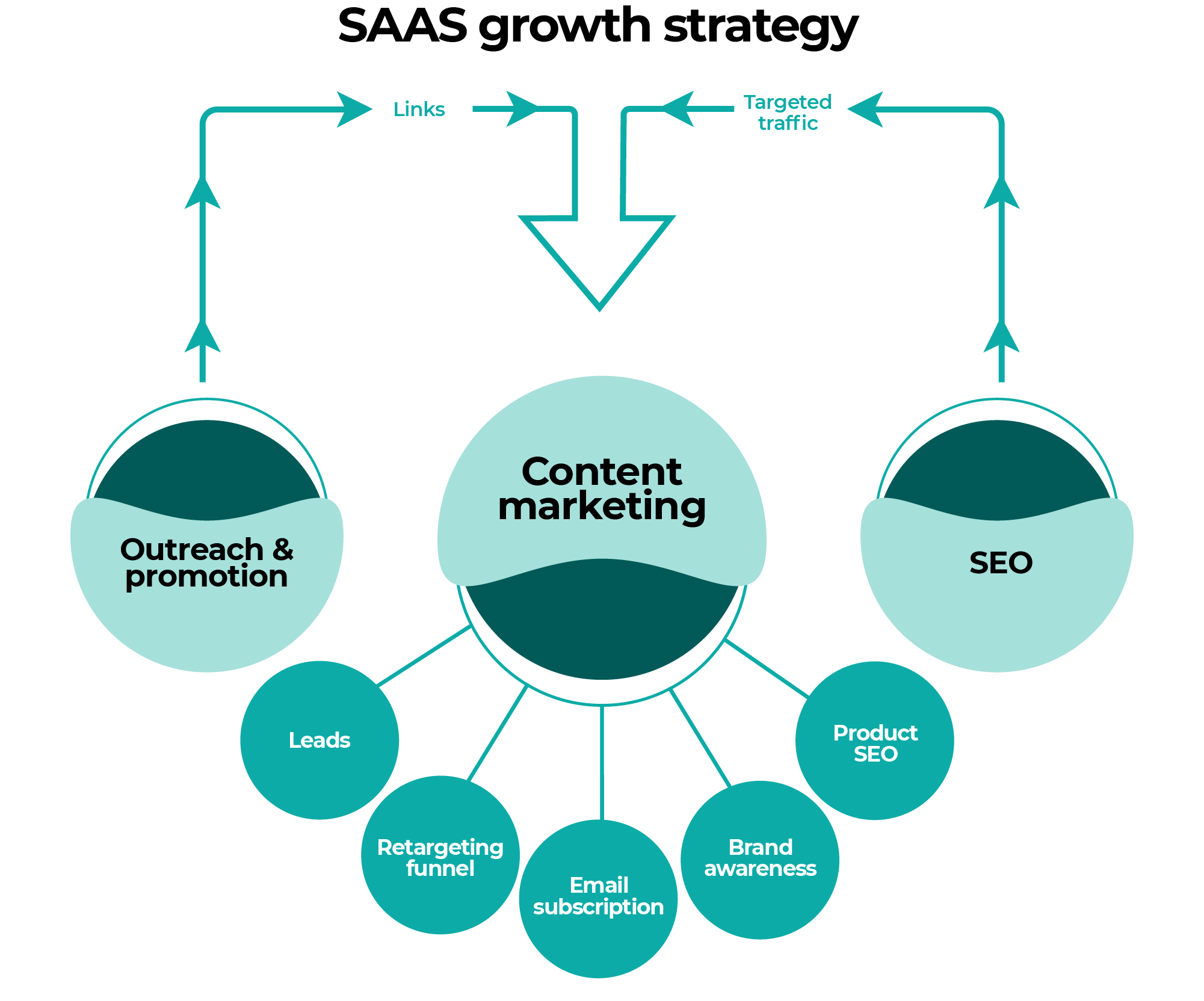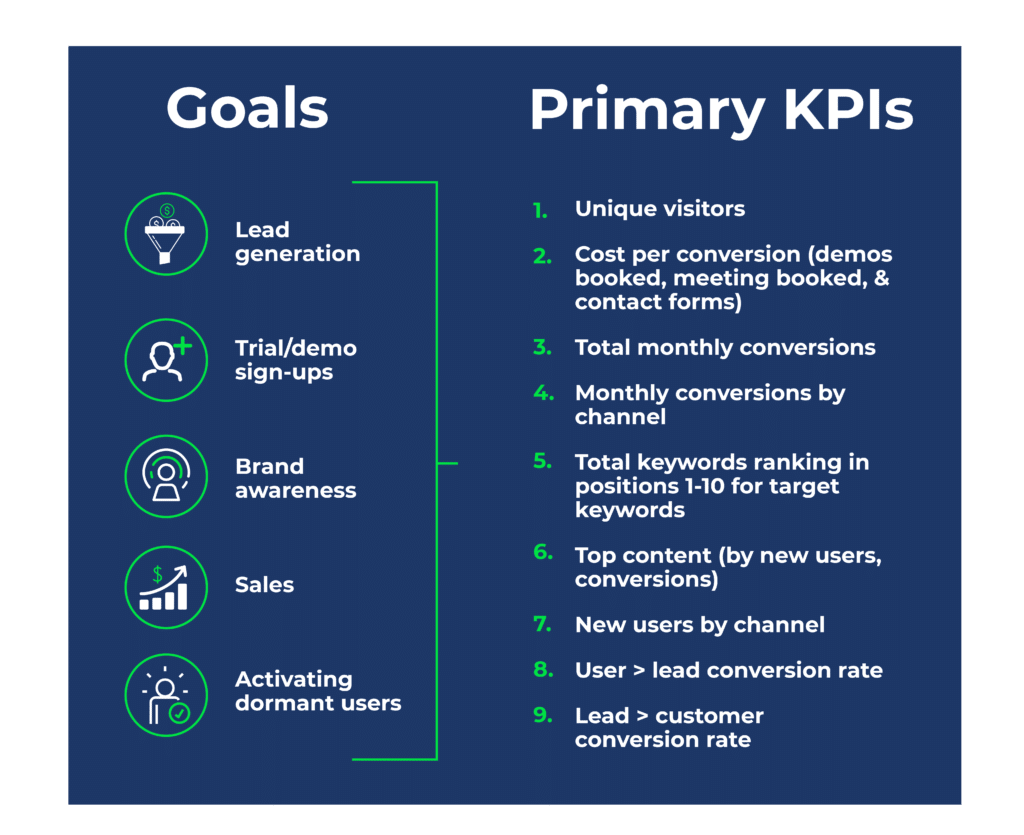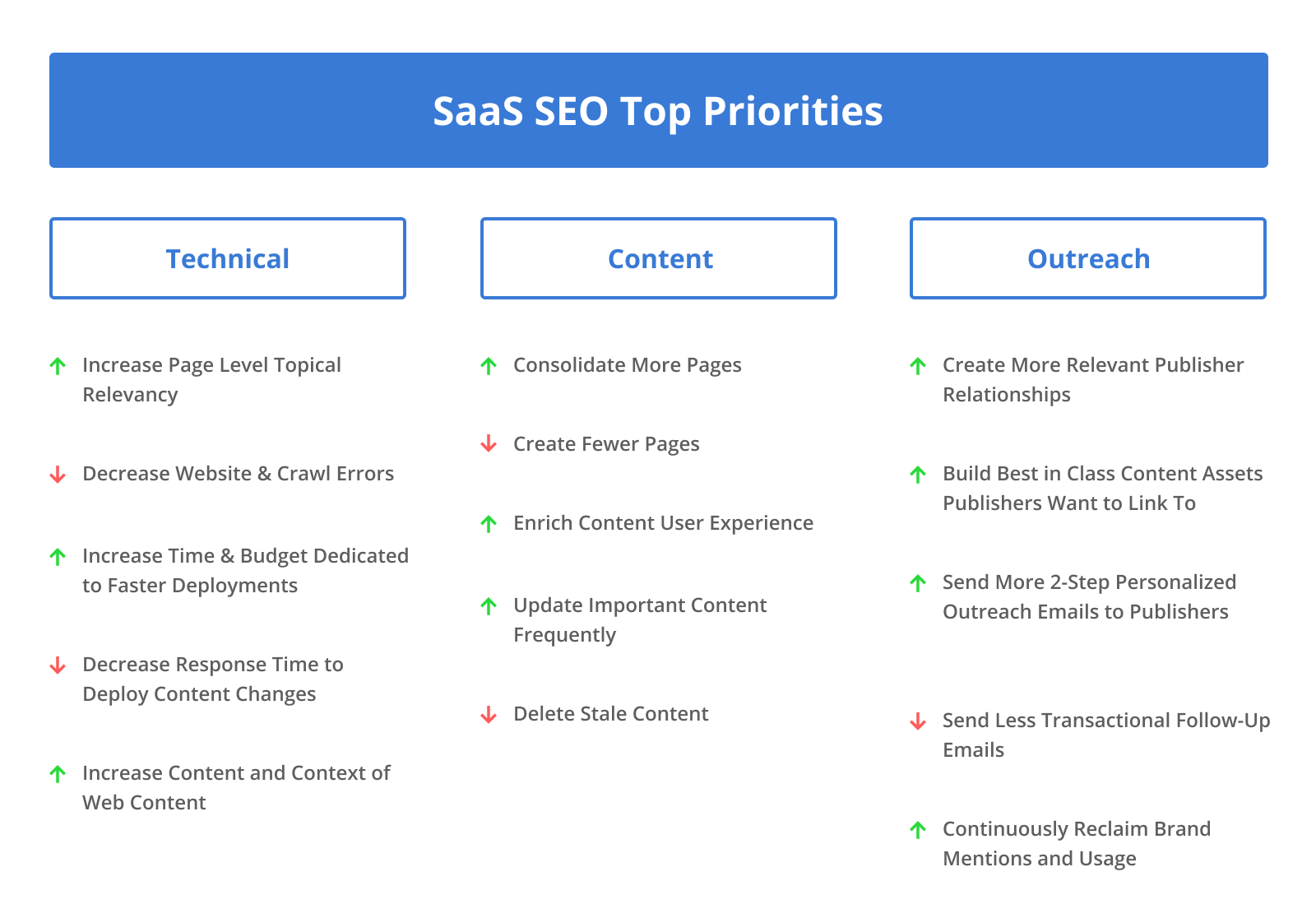A SaaS SEO strategy optimizes a software-as-a-service website to rank higher in search engine results. It attracts organic traffic, boosts conversions, and increases visibility.
A successful SaaS SEO strategy involves thorough keyword research, on-page optimization, and quality content creation. Identifying relevant keywords helps attract potential users searching for solutions your software offers. Optimizing on-page elements like meta tags, headers, and URLs improves search engine rankings.
Creating valuable, informative content engages visitors and establishes authority in your niche. Regularly updating content and building backlinks further enhances your site’s credibility. Monitoring and analyzing performance metrics ensures ongoing optimization. A well-executed SaaS SEO strategy drives organic growth and positions your software for success in a competitive market.

Credit: www.firstpagestrategy.com
Introduction To Saas Seo
Search Engine Optimization (SEO) is vital for SaaS businesses. SaaS companies rely on online visibility to attract customers. An effective SaaS SEO strategy can boost your rankings. This means more traffic and conversions.
Understanding SaaS SEO is different from regular SEO. It requires a tailored approach. Let’s explore why SEO matters for SaaS and its key differences.
Why Seo Matters For Saas
SEO brings organic traffic to your site. For SaaS companies, this is crucial. More traffic means more potential customers.
- Cost-effective: Organic traffic is free. Paid ads cost money.
- Long-term benefits: Good SEO practices last. They keep bringing traffic over time.
- Trust and credibility: High rankings build trust. People trust top results more.
Key Differences In Saas Seo
SaaS SEO has unique challenges. It’s not like regular e-commerce or content sites. Here’s why:
| Aspect | Regular SEO | SaaS SEO |
|---|---|---|
| Keywords | General terms | Specific, often technical terms |
| Content | Blog posts, articles | Case studies, whitepapers |
| Audience | Varied | Niche, often B2B |
Understanding these differences is key. Your strategy should reflect these unique needs.

Credit: beomniscient.com
Keyword Research
Keyword Research is the backbone of any successful SaaS SEO strategy. It involves finding and analyzing search terms that potential customers use. With these keywords, your content can rank higher on search engines. This process enhances your online visibility and drives more traffic to your website.
Identifying Niche Keywords
Start by identifying niche keywords specific to your SaaS product. These keywords should reflect the unique features and benefits of your software. Tools like Google Keyword Planner and Ahrefs can help you find these keywords.
Create a list of potential keywords. Next, evaluate their search volume and difficulty. Focus on keywords with low competition but high search volume.
Use the following table to organize your findings:
| Keyword | Search Volume | Competition |
|---|---|---|
| Project Management Software | 10,000 | High |
| CRM for Small Business | 5,000 | Medium |
| Time Tracking Tool | 2,000 | Low |
Competitor Keyword Analysis
Analyze the keywords your competitors are using. This helps you understand the market better. Tools like SEMrush and SpyFu can provide insights into your competitors’ strategies.
Create a list of your top competitors. Analyze their websites for keyword usage.
- Check their meta titles and descriptions.
- Look at their blog posts and landing pages.
- Note the keywords they rank for.
Compare these keywords with your own list. Identify gaps and opportunities. Aim to cover keywords your competitors have missed.
Use the following checklist for a thorough analysis:
- Meta titles and descriptions
- Blog posts
- Landing pages
- Backlinks
By understanding your competitors’ keywords, you can optimize your content better. This can help you outrank them on search engines.
On-page Optimization
On-page optimization is crucial for a successful SaaS SEO strategy. It improves your site’s visibility and ensures you rank higher in search engine results. This section covers key elements of on-page optimization, such as title tags, meta descriptions, and content optimization.
Title Tags And Meta Descriptions
Title tags are the clickable headlines in SERPs. They should be concise and include your main keyword. Aim for 50-60 characters.
Meta descriptions summarize the page content. They should be compelling and around 150-160 characters. Include your primary keyword here as well.
| Element | Best Practices |
|---|---|
| Title Tags | Use primary keyword, keep it between 50-60 characters, make it compelling. |
| Meta Descriptions | Include primary keyword, keep it around 150-160 characters, make it compelling. |
Content Optimization
Content is king. Ensure your content is high-quality and relevant. Use your main keyword naturally within the content.
- Write informative and engaging content.
- Use headers (H1, H2, H3) to structure your content.
- Include images and alt texts.
- Ensure mobile-friendliness.
- Use internal and external links.
Here’s an example of keyword usage:
Best SaaS SEO Strategies
Our guide covers the best SaaS SEO strategies. Learn how to improve your SaaS website's search ranking.
Remember to update your content regularly. Fresh content keeps users engaged and search engines happy.
Technical Seo
Technical SEO is the foundation of a successful SaaS SEO strategy. It focuses on improving the technical aspects of your website. This helps search engines crawl and index your site more efficiently. The goal is to enhance site performance, speed, and accessibility.
Site Speed And Performance
Site speed is crucial for both user experience and search rankings. A slow website can frustrate users, causing them to leave. This increases the bounce rate and reduces engagement.
To improve site speed, consider the following tips:
- Minimize HTTP requests
- Optimize images and videos
- Use a Content Delivery Network (CDN)
- Enable browser caching
- Minify CSS, JavaScript, and HTML
These steps ensure your site loads faster, making users happy and improving SEO.
Mobile-friendliness
Mobile-friendliness is essential as more users access websites via mobile devices. A mobile-friendly site adapts to various screen sizes and ensures a seamless user experience.
Here are some ways to enhance mobile-friendliness:
- Use responsive design
- Ensure readable fonts
- Optimize images for mobile
- Use touch-friendly navigation
- Test on multiple devices
Google prioritizes mobile-friendly sites, improving your search rankings.
Content Marketing
Content marketing is crucial for any SaaS SEO strategy. It helps to attract, engage, and retain customers through valuable content. By focusing on high-quality content, you can improve search engine rankings and drive organic traffic to your website.
Blogging Strategies
Blogging is a powerful tool for content marketing. Regularly publishing blog posts can boost your website’s visibility. Follow these key strategies for effective blogging:
- Keyword Research: Identify relevant keywords for your niche. Use tools like Google Keyword Planner.
- Quality Content: Write informative and engaging posts. Aim to solve your audience’s problems.
- Consistent Posting: Maintain a regular posting schedule. Consistency helps in building a loyal audience.
- SEO Optimization: Use keywords naturally. Optimize meta titles, descriptions, and headers.
- Visuals: Incorporate images, infographics, and videos. Visuals make content more engaging.
Guest Posting
Guest posting on reputable sites can significantly boost your SEO efforts. It helps in building backlinks and reaching a broader audience. Here are some tips for effective guest posting:
- Target Relevant Sites: Choose websites in your industry. Ensure they have high domain authority.
- Craft Quality Content: Provide valuable and original content. Avoid promotional tones.
- Follow Guidelines: Adhere to the host site’s submission guidelines. Respect their content rules.
- Engage with Readers: Respond to comments on your guest posts. Engage with the audience for better interaction.
- Track Performance: Monitor the traffic and engagement from your guest posts. Use tools like Google Analytics.
By implementing these strategies, you can enhance your SaaS SEO efforts. Effective content marketing can lead to higher search engine rankings and increased organic traffic.
Link Building
Link building is a crucial part of any successful SaaS SEO strategy. It enhances your website’s authority and improves search engine rankings. This section delves into the importance of acquiring quality backlinks and effective outreach tactics to boost your link-building efforts.
Quality Backlinks
Quality backlinks are essential for your SaaS website’s success. These links come from reputable sources and high-authority websites. They signal to search engines that your content is trustworthy and valuable.
To gain quality backlinks, focus on:
- Publishing high-quality content
- Ensuring your content is unique and informative
- Targeting industry-specific websites
- Creating shareable infographics and videos
High-quality content attracts natural backlinks. Industry-specific websites add more value to your SEO strategy. Shareable content increases the chances of getting backlinks.
Outreach Tactics
Effective outreach tactics can significantly boost your link-building efforts. Personalized and targeted outreach increases the success rate. Here are some outreach tactics to consider:
- Email Outreach: Craft personalized emails to site owners and bloggers. Highlight the value of your content and why it would benefit their audience.
- Guest Posting: Write informative and high-quality guest posts for reputable websites in your industry. Include a backlink to your site in the author bio or within the content.
- Social Media Engagement: Engage with influencers and industry leaders on social media platforms. Share your content and encourage them to link back to your site.
- Broken Link Building: Identify broken links on high-authority sites. Offer your content as a replacement, providing value and earning a backlink.
Email outreach should be personalized and value-driven. Guest posting helps you reach a wider audience. Social media engagement builds relationships with influencers. Broken link building turns dead links into valuable opportunities.
| Outreach Tactic | Key Benefit |
|---|---|
| Email Outreach | Personalized approach increases success rate |
| Guest Posting | Wider audience reach and increased authority |
| Social Media Engagement | Builds relationships with influencers |
| Broken Link Building | Turns dead links into opportunities |
Utilize these outreach tactics to strengthen your link-building strategy. Focus on creating valuable content and building genuine relationships. This will significantly improve your SaaS website’s SEO performance.
Analytics And Tracking
Understanding how your SaaS website performs is crucial. Analytics and tracking provide insights into user behavior. This helps you make data-driven decisions. Let’s dive into the key metrics to monitor and how to use Google Analytics.
Key Metrics To Monitor
Monitoring the right metrics ensures you track your progress. Here are some key metrics:
- Traffic Sources: Know where your visitors come from.
- Conversion Rate: Measure how many visitors turn into customers.
- Churn Rate: Track the percentage of customers who cancel.
- Customer Lifetime Value (CLV): Predict the revenue from a customer.
- Average Session Duration: See how long users stay on your site.
- Bounce Rate: Check the percentage of users who leave quickly.
Using Google Analytics
Google Analytics is a powerful tool. It helps you track important metrics. Here’s how to use it:
- Set Up Your Account: Create a Google Analytics account. Add your SaaS website.
- Install Tracking Code: Add the tracking code to your website. This code collects data.
- Create Goals: Define goals that match your business objectives.
- Use Dashboards: Customize dashboards to see the metrics that matter.
- Analyze Reports: Use reports to understand user behavior. Adjust your strategy accordingly.
Google Analytics offers various features. You can track page views, user demographics, and more. This data helps you improve your SaaS SEO strategy.
Advanced Seo Techniques
Boost your SaaS website with advanced SEO techniques. These methods enhance visibility and improve rankings. Elevate your strategy with cutting-edge practices.
Schema Markup
Schema Markup helps search engines understand your content. It provides context to your web pages.
Use Schema Markup to highlight important data. This includes product details, reviews, and FAQs.
Below is an example of how Schema Markup looks in HTML:
Implementing Schema Markup can improve click-through rates. It makes your listings more attractive.
Voice Search Optimization
Voice search is on the rise. Optimizing for voice queries can boost traffic.
Focus on natural language and question phrases. People use conversational terms in voice search.
Here are some tips for Voice Search Optimization:
- Use long-tail keywords.
- Answer common questions directly.
- Create an FAQ page.
Voice search often pulls from featured snippets. Aim to get your content into these snippets.
Common Pitfalls
Crafting a successful SaaS SEO strategy demands precision and care. Mistakes can hinder your progress and lower your search rankings. Let’s discuss some common pitfalls you must avoid.
Avoiding Keyword Stuffing
Keyword stuffing involves overloading a webpage with keywords. This practice harms your site. Search engines will penalize your website. Instead, use keywords naturally in your content. Focus on providing value to the reader. Search engines favor quality over quantity.
Consider the following tips:
- Use synonyms and related terms.
- Maintain a keyword density of 1-2%.
- Focus on user experience.
Handling Duplicate Content
Duplicate content can confuse search engines. It affects your site’s ranking. Always create unique content for each page. Use tools to check for duplicates. If you find any, remove or rewrite them.
Here’s a quick way to handle it:
| Step | Action |
|---|---|
| 1 | Identify duplicate content using tools. |
| 2 | Rewrite or remove the duplicates. |
| 3 | Use canonical tags for necessary duplicates. |
Remember, unique content boosts your SEO performance. Aim to offer fresh insights and valuable information.
Future Of Saas Seo
The future of SaaS SEO is ever-changing. With new trends and algorithm updates, staying ahead is vital. This section explores emerging trends and how to prepare for algorithm changes.
Emerging Trends
Voice search is on the rise. More people use voice assistants. Optimize your content for natural language queries.
Artificial Intelligence (AI) is shaping SEO. AI can analyze data and predict trends. Use AI tools to enhance your SEO strategy.
Video content is gaining popularity. Videos engage users and can boost your rankings. Create informative and engaging videos for your audience.
| Trend | Description |
|---|---|
| Voice Search | Optimize for natural language queries |
| AI in SEO | Use AI tools for data analysis |
| Video Content | Create engaging videos |
Preparing For Algorithm Changes
Google updates its algorithm regularly. Stay informed about these changes. Follow SEO news and updates.
Content quality is crucial. High-quality content ranks better. Ensure your content is informative and well-written.
User experience (UX) matters. Good UX can improve your rankings. Make your website user-friendly and fast.
- Stay informed about Google updates
- Focus on high-quality content
- Enhance user experience on your site

Credit: revenuezen.com
Frequently Asked Questions
What Is Saas Seo Strategy?
A SaaS SEO strategy focuses on improving the online visibility of software-as-a-service companies. It involves optimizing content, keywords, and technical SEO to rank higher on search engines.
How To Improve Saas Website Seo?
Improving SaaS website SEO involves keyword research, optimizing on-page elements, creating high-quality content, and building backlinks. Regularly update content and monitor performance.
Why Is Seo Important For Saas Companies?
SEO is crucial for SaaS companies to attract organic traffic, generate leads, and increase conversions. High search engine rankings enhance brand visibility and credibility.
What Are Key Seo Metrics For Saas?
Key SEO metrics for SaaS include organic traffic, keyword rankings, conversion rates, and bounce rates. Monitoring these helps evaluate the effectiveness of your SEO strategy.
Conclusion
Crafting a solid SaaS SEO strategy is essential for success. Focus on keyword research, quality content, and user experience. Consistent effort in these areas will improve your search rankings. Stay adaptable and monitor performance regularly. Implement these tips to boost visibility and attract more customers to your SaaS business.
